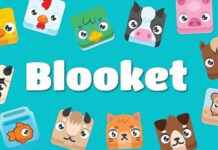In today’s fast-paced digital world, finding innovative ways to make learning both effective and enjoyable is key to student success. Enter Blooket Play—a dynamic, interactive platform that transforms traditional quizzes into exciting games, sparking curiosity and engagement like never before. Whether you’re a teacher aiming to energize your classroom or a student looking to boost your knowledge through play, Blooket offers an unbeatable blend of fun and education. This ultimate guide will walk you through everything you need to know to maximize your Blooket experience, from mastering game modes to strategic tips that enhance learning outcomes. Get ready to unlock the full potential of Blooket Play and turn every study session into an exhilarating adventure. Let’s dive into how you can boost learning fun and achieve Blooket play success!
Understanding Blooket Play: What It Is and Why It Enhances Learning
=== Understanding Blooket Play: What It Is and Why It Enhances Learning ===
Blooket Play is an educational gaming platform designed to make learning interactive, engaging, and enjoyable for students across various age groups. Launched as part of the broader Blooket ecosystem, it integrates quiz-based gameplay with a competitive and social environment, allowing educators to transform traditional classroom activities into dynamic learning experiences.
At its core, Blooket Play functions by enabling teachers to create or select pre-made question sets, which are then used in live game sessions where students participate individually or in teams. The platform features diverse game modes—such as Tower Defense, Cafe, and Battle Royale—that provide varied gameplay mechanics while reinforcing academic content. This gamification approach encourages active participation, immediate feedback, and knowledge retention through repetition in a fun context.
One of the primary reasons Blooket Play enhances learning is its ability to cater to different learning styles. Visual learners benefit from colorful graphics and real-time animations, while kinesthetic learners engage through interactive challenges. Additionally, the competitive aspect motivates students to improve their performance, fostering a growth mindset and collaboration when played in teams.
Research in educational technology supports gamification as a method to increase student engagement and motivation. By incorporating game elements like scoring, timed challenges, and leaderboards, Blooket Play taps into intrinsic motivators, making the learning process less monotonous. Moreover, the ease of use and accessibility—being web-based and compatible with multiple devices—ensures that both in-person and remote learners can participate seamlessly.
In summary, Blooket Play is a versatile and innovative tool that leverages gamified learning to boost student engagement, cater to diverse learning preferences, and improve knowledge retention. Its integration into educational settings exemplifies modern strategies to enhance traditional teaching methodologies with interactive technology.
Top Strategies to Maximize Engagement in Blooket Play Sessions
== Top Strategies to Maximize Engagement in Blooket Play Sessions ==
Blooket is an interactive online platform that combines educational content with game-based learning, enabling teachers and students to engage in dynamic quiz-style play sessions. To maximize engagement during Blooket play sessions, educators can employ several effective strategies that foster participation, motivation, and learning retention.
=== 1. Customize Content to Student Interests ===
Tailoring the question sets to align with students’ interests and current curriculum enhances relevance and engagement. Educators can create or modify question banks that reflect topics students are passionate about, which increases intrinsic motivation. For example, incorporating pop culture references or themes related to students’ hobbies can make learning more relatable and enjoyable.
=== 2. Utilize Varied Game Modes ===
Blooket offers multiple game modes such as Tower Defense, Cafe, and Battle Royale, each providing a unique interactive experience. Rotating through different game types prevents monotony and keeps students excited about participating. Teachers should experiment with various modes to discover which resonate best with their class dynamics and learning objectives.
=== 3. Foster Competition and Collaboration ===
Introducing friendly competition through leaderboards and team play encourages students to actively participate. Group challenges and cooperative gameplay can promote collaboration, communication, and peer learning. Balancing competitive elements with cooperative tasks ensures an inclusive environment where all students feel motivated to contribute.
=== 4. Incorporate Timely Feedback and Rewards ===
Providing immediate feedback during Blooket sessions helps students recognize their progress and areas for improvement. Utilizing the platform’s reward system—such as earning points, tokens, or “blooks”—reinforces positive behavior and achievement. Teachers can also offer additional incentives or recognition to sustain enthusiasm.
=== 5. Set Clear Expectations and Session Goals ===
Establishing clear objectives for each Blooket session helps students focus on learning outcomes while enjoying the gameplay. Communicating session goals at the outset ensures that learners understand the purpose behind the activities, which can enhance purposeful engagement.
By integrating these strategies, educators can create vibrant and effective Blooket play sessions that not only boost engagement but also support meaningful learning experiences.
How to Create Winning Blooket Sets for Effective Classroom Fun
== How to Create Winning Blooket Sets for Effective Classroom Fun ==
Blooket is an innovative educational platform that combines learning with interactive gameplay, making it a popular tool among educators to enhance student engagement. Central to maximizing Blooket’s effectiveness in the classroom is the creation of well-designed question sets, known as Blooket sets. These sets serve as the foundation for gameplay, directly influencing the educational value and entertainment factor. This section explores strategies for creating winning Blooket sets that foster effective classroom fun.
=== Understanding the Purpose of Blooket Sets ===
A Blooket set comprises a collection of questions tailored to specific topics or learning objectives. These sets can be customized to align with curriculum standards, review sessions, or formative assessments. Effective sets strike a balance between challenge and accessibility, ensuring that students remain motivated while reinforcing key concepts.
=== Steps to Create Effective Blooket Sets ===
Identify Learning Objectives: Begin by defining clear educational goals for the set. Whether reviewing vocabulary, math skills, or historical facts, each question should target specific knowledge or skills.
Select Appropriate Question Types: Blooket supports multiple question formats, including multiple-choice and true/false. Choose formats that suit the content and promote critical thinking.
Craft Clear and Concise Questions: Avoid ambiguity by writing straightforward questions. Use age-appropriate language and avoid overly complex phrasing.
Incorporate Variety and Difficulty Levels: Mix easy, moderate, and challenging questions to maintain engagement and cater to diverse learning abilities.
Use Relevant and Relatable Content: Incorporate examples, scenarios, or terminology familiar to the students to enhance comprehension and interest.
Include Explanations for Answers: When possible, add brief explanations to correct or reinforce learning after each question, which supports formative assessment.
=== Tips for Enhancing Engagement ===
Add Visuals: Incorporate images or diagrams where relevant to support visual learners.
Leverage Themes and Blooks: Customize the set’s appearance with Blooket themes and avatars to increase excitement.
Test the Set: Play through the set to ensure questions flow logically and difficulty is appropriate.
=== Conclusion ===
Creating winning Blooket sets requires thoughtful planning and alignment with educational goals. By designing clear, varied, and engaging questions, educators can harness Blooket’s dynamic platform to deliver fun-filled, impactful learning experiences that captivate students and reinforce knowledge retention. This approach not only boosts learning outcomes but also fosters a positive classroom atmosphere conducive to active participation.
Tips for Teachers: Integrating Blooket Play into Your Curriculum
== Tips for Teachers: Integrating Blooket Play into Your Curriculum ==
Blooket is an engaging online platform that combines interactive quizzing with game-based learning, making it an excellent tool for educators aiming to enhance student participation and retention. Integrating Blooket play into the curriculum can transform traditional teaching methods by fostering a fun, competitive, and collaborative environment. The following tips provide practical strategies for teachers to successfully incorporate Blooket into their classrooms.
=== Understand the Platform and Its Features ===
Before implementing Blooket, teachers should familiarize themselves with its diverse game modes, question types, and customization options. Blooket offers multiple game formats such as Tower Defense, Cafe, and Battle Royale, each catering to different learning styles and classroom dynamics. Exploring these modes allows educators to select games that best align with their lesson objectives and student preferences.
=== Align Questions with Curriculum Objectives ===
Effective integration requires that the content on Blooket directly supports curriculum goals. Teachers should create or curate question sets that reinforce key concepts and skills being taught. Utilizing Blooket’s question bank or designing custom quizzes ensures that gameplay complements academic standards and assessment criteria.
=== Schedule Regular Gameplay Sessions ===
Incorporating Blooket into regular classroom activities maintains student engagement and reinforces learning over time. Teachers can schedule weekly or bi-weekly sessions, using Blooket both as a formative assessment tool and a motivational break from traditional lessons. Consistency helps students become comfortable with the platform and encourages continuous learning.
=== Promote Collaborative and Competitive Learning ===
Blooket’s multiplayer games encourage healthy competition and collaboration among students. Teachers can organize team-based play to foster peer interaction and communication skills. Setting classroom challenges or tournaments can increase motivation and create a dynamic learning atmosphere.
=== Monitor Progress and Provide Feedback ===
The platform offers analytics that track student performance and participation. Teachers should regularly review these insights to identify areas where students excel or struggle. Providing timely feedback based on Blooket results helps tailor instruction, address misconceptions, and support individual learning needs.
=== Ensure Accessibility and Inclusivity ===
To maximize the benefits of Blooket, educators must ensure that all students can participate fully. This includes verifying that students have access to devices and reliable internet, as well as adapting content for diverse learning abilities. Offering alternative activities or modified game settings can promote inclusivity.
By thoughtfully integrating Blooket play into the curriculum, teachers can enhance student engagement, reinforce learning objectives, and create an interactive educational experience that motivates and inspires.
Common Challenges in Blooket Play and How to Overcome Them
== Common Challenges in Blooket Play and How to Overcome Them ==
Blooket has rapidly gained popularity as an interactive online platform that combines learning with gameplay, making educational activities more engaging for students. However, like any digital learning tool, users often encounter challenges that can hinder the overall experience. Understanding these common obstacles and implementing effective strategies to overcome them can significantly enhance Blooket play success.
=== 1. Technical Issues ===
One of the most frequent challenges in Blooket play involves technical difficulties such as connectivity problems, slow loading times, or device incompatibility. These issues can disrupt gameplay and cause frustration among participants.
Solution: Ensuring a stable internet connection is crucial. Teachers and students should use updated browsers and devices that meet Blooket’s technical requirements. Additionally, clearing cache and cookies or restarting the device may resolve loading issues. For persistent problems, consulting Blooket’s support resources or community forums can provide tailored assistance.
=== 2. Managing Diverse Learning Paces ===
In a classroom setting, students have varying levels of understanding and speed in answering questions. Blooket’s timed games may put pressure on slower learners, potentially affecting their confidence and engagement.
Solution: Educators can customize game settings by adjusting time limits or choosing game modes that emphasize collaboration rather than competition. Incorporating Blooket as a supplementary tool alongside other teaching methods ensures inclusivity and accommodates all learning styles.
=== 3. Content Quality and Relevance ===
Another challenge lies in the creation or selection of suitable question sets. Poorly designed or irrelevant content diminishes educational value and player interest.
Solution: Teachers should curate or create question sets aligned with curriculum objectives and students’ proficiency levels. Blooket’s extensive library offers a variety of topics, but custom sets allow for tailored learning experiences. Reviewing and updating content regularly keeps the material fresh and engaging.
=== 4. Maintaining Student Engagement ===
While Blooket’s gamified approach is inherently motivating, sustaining long-term engagement can be challenging, especially if games become repetitive.
Solution: To keep gameplay exciting, educators can vary game modes, integrate thematic content related to current lessons, and incorporate rewards or recognition systems. Encouraging student input in selecting topics or creating questions fosters ownership and enthusiasm.
=== Conclusion ===
Addressing common challenges in Blooket play requires a proactive approach combining technical preparedness, thoughtful content selection, and adaptive teaching strategies. By overcoming these obstacles, educators can maximize the platform’s potential to create an enjoyable and effective learning environment.
Conclusion
In conclusion, mastering Blooket Play offers an exciting and interactive way to enhance learning for students of all ages. Throughout this guide, we explored essential strategies such as understanding game modes, customizing question sets, and leveraging competitive features to maximize engagement and retention. By incorporating these tips, educators and learners can transform traditional study sessions into dynamic, fun-filled experiences that promote active participation and knowledge reinforcement. Remember, the key to Blooket success lies in consistent practice, creativity in question design, and fostering a positive, collaborative environment. Whether you’re a teacher aiming to invigorate your classroom or a student eager to boost your learning efficiency, Blooket provides the tools to make education both enjoyable and effective. Start implementing these strategies today and watch as learning transforms from a task into an exciting adventure—because when fun meets education, success naturally follows!







